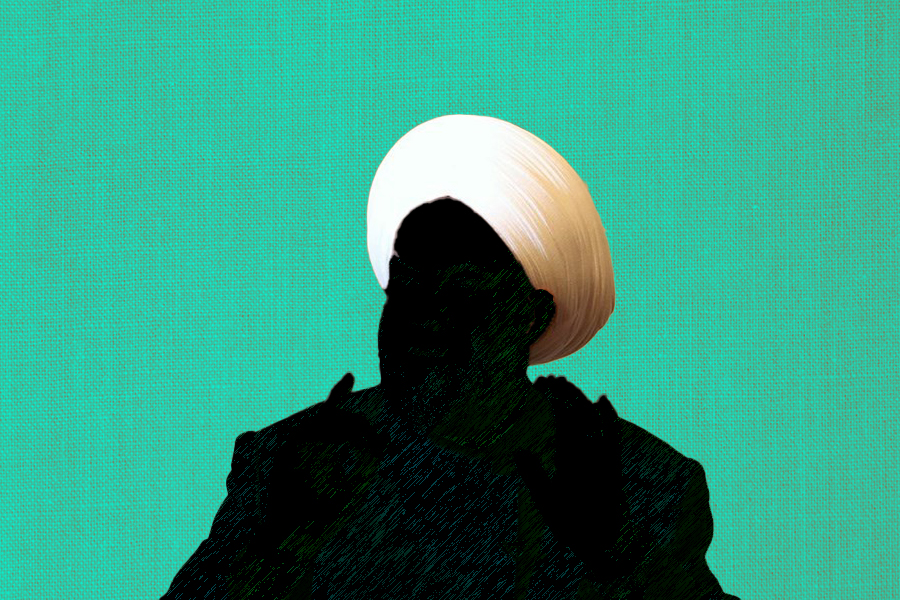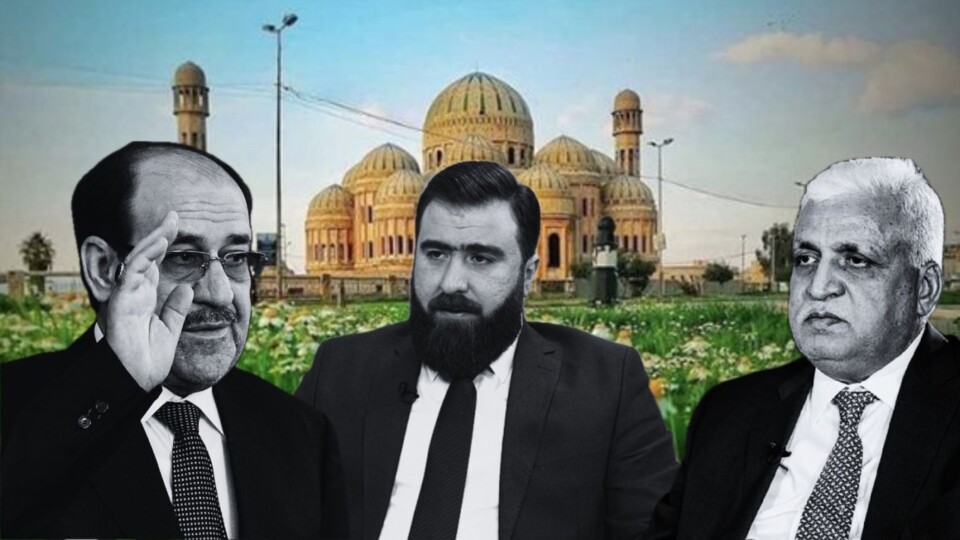

On the morning of April 9, 2003, the Sunni Arabs in Iraq woke up to a reality they had not played a role in shaping for the first time in their modern history. The scene of American tanks parading through the streets of Baghdad marked the closure of a significant era governed by this group of people in Iraq.
The Sunni community as a whole did not smoothly accept this message, and for some, the issue seemed to be about “protecting Israel’s security” and “securing oil.” While these reasons, if valid, could be considered driving factors for the invasion, the isolation experienced by Iraqis during Saddam Hussein’s regime, especially during the period of sanctions, made them less receptive to the nature of the change that occurred with his downfall.
Perhaps Abdul Aziz al-Hakim’s statement was the most explicit and clear in expressing the identity of the new political system when he commented on the hanging of Saddam Hussein at dawn on Eid al-Adha in 2006, saying that his execution was “the execution of the unjust equation that ruled the country during the previous period.”
This identity, which many have played with it during decades of opposition to the rule of the Iraqi state, was not an openly accessible culture that one could familiarize themselves with beyond the literature of Iraqi opposition. It was something that could cost a person their life during the time of the previous regime.
However, the main idea that was manufactured and instilled is that a certain group of people representing a presumed “numerical minority” monopolized governance and power in British-controlled Iraq since its establishment by Gertrude Bell, in collaboration with the tribal chieftain of Baghdad, Abdul Rahman al-Kailani. In literary works, al-Kailani is depicted as an “elderly sectarian” who aimed to preserve the interests of his people and ensure their continued control over the seat of power.
Lost Without a Compass: Navigating the Unknown
When Saddam Hussein’s statue collapsed in Firdos Square, the Sunni Arabs found themselves adrift without political, religious, or social systems to gather under or use to guide their path toward the future. The overpowering presence of the former regime’s leader and his absolute influence led to the fragmentation of many “umbrellas” that could have played significant roles during that period.
There was no presence of a Sunni religious institution except for the “al-Ifta,” which was directly controlled by the state and had minimal influence on the public sphere. In contrast, the Shia religious institution, “Al-Hawza,” maintained its financial and administrative independence from the state. It quietly carried out its activities, avoiding confrontation with the existing regime, despite the occasional setbacks it encountered from time to time.
The political parties and active groups within the Sunni community have seen a decline in their presence and influence in the public sphere. This is primarily due to continuous arrest campaigns and executions that have specifically targeted notable figures within these parties and groups over the past four decades.
Furthermore, the influence of military leaders has also diminished due to some coup attempts led by Sunni officers in the 1980s and 1990s against the ruling regime. These attempts took place primarily in the Salahaddin and Anbar provinces. As a result, most of the security and military powers became concentrated within a small circle comprising the family of the late President Saddam Hussein and some of his close associates.
While the tribal institution retained its limited social roles within specific regions, there was a lack of a prominent “Sheikh ‘oumum” figure from a Sunni tribe or clan who would wield significant influence at a national level across the country.
A Limping Political Process
With the emergence of the new regime, the prevailing atmosphere within the Sunni community tended to boycott the political process and marginalize those who did participate. This was because the narrative appeared to portray the process as a victory for specific factions at the expense of others.
The messages of “humiliation” – as interpreted by some – and the utilization of history and its sectarian narratives marked a significant change in the collective awareness of Iraqis in general, and Sunni Arabs in particular. They were not accustomed to the rhetoric of sectarian division, having been raised under an inclusive system that prioritized Arab nationalism, surpassing other regimes in its Arab national orientation.
On July 12, 2003, when the “Iraqi Governing Council” was announced, the outlines of the new political system emerged, which would be capable of leading Iraq until further notice.
The Council consisted of 25 members, with only 5 of them being Sunni Arabs. This was seen by some as the “conditions of the victor” imposed after the collapse of the Ba’athist regime, which was predominantly Sunni-led. It was clear that the US administration intended to allocate 20% of power to Sunni Arabs, reflecting the demographic proportions of the Iraqi population.
The Sunni objection was evident from the beginning, especially since sectarian quotas were not based on accurate official population statistics, but rather on studies conducted by academic or opposition figures, many of whom harbored “sectarian” animosity towards the Iraqi state and bitterness towards the composition of the previous government since the establishment of the Iraqi Kingdom. However, over time, it became a political norm that resembled the Lebanese-style distribution of power and its spoils.
The significant Sunni opposition to the nature and composition of the Council gave rise to a state of anger and complete rejection of the political process from its inception. Some individuals expressed this opposition on the ground through various acts of violence, targeting American forces, while others directed their weapons towards the newly formed security forces, which were established under the supervision of the United States and the White House administration during the Republican era.
The Muslim Scholars Association, formed in 2003, along with different Ba’athist and Islamic factions, stood at the forefront of the opposition to political participation. Nevertheless, the dominant current proved to be stronger than all of them.
The “new leaders”
As the power dynamics shifted and the old power structure crumbled, new forces emerged to take center stage in the new Sunni political and social landscape.
These forces were mainly embodied by the Islamic Party, which formed the Tawafuq Front comprising three distinct groups with different orientations. However, the Islamic Party asserted its dominance over them, thanks to its larger popular support base and superior organizational expertise compared to other groups.
In addition to Tawafuq, various factions of Ba’athists came to the forefront. Some formed the National Dialogue Front, while others preferred to work with the Al-Wifaq Movement led by Ayad Allawi. However, these groups were politically marginalized due to the “de-Baathification” law that targeted party members, excluding them from the new political process.
Prominent public figures such as Tariq al-Hashimi, Adnan al-Dulaimi, Rafi al-Issawi, Saleh al-Mutlak, Mahmoud al-Mashhadani, Ahmed Abdul Ghaffur al-Samarrai, Osama al-Nujaifi, and others stepped forward to lead and represent the Sunni community in the media.
This group can be identified as the “Sunni hawks” in the new political landscape, representing a generation that was more principled and hardline than the subsequent ones.
Some garnered considerable popular support, as evident in the 2010 elections. Tariq al-Hashimi, for example, received over 270,000 votes from Baghdad province. This substantial number of votes granted him significant legitimacy, establishing him as a representative of the Sunni Arab community in both national and international contexts.
Although Tariq al-Hashimi held a position as Deputy President with limited powers, he wielded significant influence across the entire political landscape. Some saw him as a legitimate contender to Prime Minister Nouri al-Maliki, especially as the situation in Syria intensified and sectarian tensions rapidly emerged in the streets.
The relationship between al-Hashimi and al-Maliki transformed from a kind of alliance to a state of conflict and animosity, as evidenced by their mutual statements and media confrontations. This escalation prompted severe legal actions against al-Hashimi and his allies, leading to the arrest of numerous associates. Concurrently, widespread protest demonstrations spread across different areas of Baghdad and Sunni provinces, ultimately being exploited and infiltrated by the terrorist organization “ISIS.”
Spark from Fallujah
In contrast to the moments of collapse and swift surrender of Iraqi cities in the face of the American advance, which revealed the complete disintegration of the Iraqi army and the followers of the Ba’ath Party, and hinted at an implicit acceptance of the “Yankees” presence in the streets of towns and villages throughout the country, there was a sudden emergence of armed resistance against the American forces.
The initial spark originated from Fallujah, and soon after, the targeting of US forces escalated by various Sunni factions across the Sunni-dominant regions of Iraq, spanning from northern Nineveh to southern Babil.
The titles and banners of the new armed groups varied, but they followed two ideological directions: the first being Ba’athist, consisting of remnants of the Iraqi army and Saddam’s Fedayeen, and the second being a wide spectrum of Islamic groups, ranging from right to left.
The expansion of this phenomenon was driven by the assassinations and persecution of hundreds of former army officers and pilots by armed groups supported by Iran. Additionally, these killings targeted some Shia youth who embraced the Sunni Salafi ideology, particularly in Basra and the eastern regions of Baghdad.
As time went on, the armed groups became increasingly fragmented, some of them demonstrated a stronger tendency towards violence and engaged in indiscriminate targeting of their adversaries. This eventually paved the way for the prominent emergence of Al-Qaeda, openly declaring war against various factions, including Americans, the army, and the police. The scope of their operations further expanded to encompass all Shia individuals and supporters of the political process within the Sunni community.
The daily accounts of mutual violence, unidentified corpses, retaliatory kidnappings, and mass killings served as catalysts for the spread of extremist armed groups’ rhetoric and fueled an unrelenting and destructive war. This was particularly evident following indiscriminate killings on the streets, and the destruction, and burning of mosques by armed militants from the opposing side, all triggered by the bombing of the Samarra Shrine.
The first phase of this conflict concluded with the emergence of the Awakening movements, which pursued the remnants of Al-Qaeda and forced them into retreat in the desert. This was followed by the assassination of their leader, Sheikh Sattar Abu Risha, by “unknown” assailants. Subsequently, Nouri al-Maliki secured a second term as Prime Minister, albeit through a difficult process, after the predominantly Sunni Iraqiya List emerged victorious in the 2010 elections.
References and turbans
Some Sunnis have attempted to replicate the concept of “religious reference” as it exists among the Shia and create a similar one within the Sunni community, disregarding the historical contexts upon which the Shia religious institution was formed. They also overlook the subsequent developments that occurred in it with the British invasion of Iraq and the circumstances that shaped its relationship with the Iraqi state over the decades.
These attempts culminated in the establishment of the “Iraqi Jurisprudential Assembly” at the Abu Hanifa Mosque in 2012, led by Sheikh Ahmed Hassan al-Taha. It was formed based on a previous body known as the “Council of Scholars of Iraq.” Gradually, the Assembly began to play a role in providing religious guidance and preaching within the Sunni community. It occasionally engaged in political discussions, particularly through Friday sermons, which often included direct criticism of the government and the political process.
On the other hand, there was a group surrounding one of the prominent Sunni religious scholars, Sheikh Abdul Malik al-Saadi, which presented itself as the religious representative of Sunnis in Iraq. Their discourse towards authority was more intense and strict. However, they remained isolated from the public sphere of the Sunni street until the protests in Sunni provinces brought them back to the forefront once again.
In addition to these two factions, other groups whispered around the idea of “Sunni religious authority” and positioned themselves as legitimate entities possessing the right to issue religious verdicts and lead the community in those complex circumstances. Among these were the “Muslim Scholars Association,” the group led by Sheikh Rafi’ al-Rifa’i, as well as various Salafi and Sufi groups.
Over the course of two decades, the aforementioned factions did not succeed in their project of establishing a true religious reference that had a genuine connection with and influence over the public. The exception to this was the role played by the Iraqi Jurisprudence Assembly, which developed some degree of symbolic relationships with the political sphere and the government. This culminated in the granting of a legal right to choose the head of the Sunni Endowment Diwan, which, however, remained a mere theoretical right on paper and has yet to be exercised to this day.
“4 Sunnis”
The continuation of al-Maliki’s power in 2010 marked a new phase, in which Sunni individuals felt officially “accused” by the state. The stigma of terrorism followed them in the streets, courts, and government agencies. As a result, the term “Article 4 Sunni” emerged among the Sunni population, referring to Article 4 of the counterterrorism law.
Based on reports from the “Secret Intelligence,” tens of thousands of young people were arrested from various areas in Baghdad, Diyala, Mosul, northern Babil, Basra, and Wasit. Prisons became overcrowded with individuals facing what is described as “fabricated” charges. Many families resorted to selling their houses and possessions to pay lawyers and certain security personnel to facilitate the release of their children from detention or at least ensure their appearance in court.
Once again, Fallujah came to the forefront when the then Minister of Finance, Rafi al-Issawi, was arrested. The tribesmen of the city responded by blocking the international highway that passes through it and setting up protest tents. The movement quickly spread and received widespread support from Mosul to Baghdad. Many saw it as an outlet to vent their accumulated anger and frustration over the oppressive policies they had endured under al-Maliki’s authority.
The protest persisted for approximately a year, but its momentum waned during its final months, leading to the gradual withdrawal of many participants from the protest squares. However, an unexpected turn of events occurred when terrorists suddenly infiltrated one of the gatherings. These individuals had managed to escape from Abu Ghraib prison in a manner that remains a mystery. Seizing the opportunity, they rallied under the banner of the fading Al-Qaeda organization that was subsequently inherited by a more perilous and ruthless group known as the “Islamic State of Iraq and Syria” (ISIS).
The situation escalated, leading to increased tensions and a shift towards armed conflict, ultimately resulting in the capture of Fallujah by militants. In the following months, the cities of Mosul, Tikrit, and others also fell under their control, marking the initial and public emergence of ISIS terrorists.
A new dark period unfolded in the lives of Sunni Arabs, as they describe it. They faced relentless pursuit by ISIS militants and were targeted by militias, particularly when they tried to escape from areas under ISIS control, over 20,000 individuals vanished without anyone knowing their fate to this day.
“Ila Kafeel”
With the control of ISIS over approximately one-third of Iraq’s territory, the largest displacement operation in its contemporary history began. Millions of people fled toward Baghdad, the Kurdistan Region, and other provinces, seeking refuge from the targeting of the Organization and the fires of war.
The “Bzeibiz Bridge” represented a pivotal turning point in the collective consciousness of Sunni Arabs, becoming a “black hole” that swallowed their perceptions of ancient Iraq. This was accompanied by sectarian-based collective denigration events led by influential groups in power.
A prominent hashtag “Ila Kafeel” (a guarantor is required) dominated social media search engines at the time. It prohibited Sunni individuals fleeing from ISIS from entering their capital without a guarantor from its residents. This complex suffering was experienced by hundreds of thousands of displaced individuals who were received by the capital in the years following the war on terrorism. They endured extortion, kidnappings, and disappearances without significant government intervention.
Collectively, these events can be considered the birth of a clear “pragmatic” tendency among the emerging politicians who came to the forefront after decades of ideological dominance since the fall of the monarchy.
The subsequent October protests in 2019, despite the initial efforts and sacrifices made by some of its youth, were unsuccessful in addressing the psychological and social divisions among Sunni Arabs. This lack of success became apparent later when there were tense popular reactions to calls for protests in Anbar, with many accusing the activists of engaging in “political exploitation.”
All of this was a prelude to the reshuffling of political ranks, the collapse of certain forces, and the rise of others that began to assert themselves on the scene. Among them was the Al-Taqadum Party, led by Mohammed Al-Halbousi, a former member of parliament in 2014, governor of Anbar thereafter, and subsequently serving as the Speaker of the Legislative Authority for two consecutive terms.
Pigeons and falcons
The swift repercussions experienced by Sunni regions following the events of 2014 contributed to the emergence of politicians who could be referred to as “pigeons” amidst a “forest” of radical forces. This group was led by prominent figures such as Saleem al-Jubouri, Abdul Latif al-Humayim, and Mohammed al-Karbouli, along with others. They all sought to appease the prevailing party and achieve quick settlements that would secure their positions or guarantee their privileges, as their opponents accused them of.
During that period, there were also widespread demographic changes and the emptying of entire areas of their inhabitants under the pretext of “ISISization” (belonging to ISIS). This included areas such as Jarf al-Sakhr, Yathreb, Suleiman Bek, Al-Awja, and surrounding areas and entire villages in Diyala, Nineveh, and southern Salah al-Din, as well as the outskirts of Baghdad.
Then came the 2018 elections, bringing new faces to power, led by Mohammed al-Halbousi, who began forming broad alliances with Shia forces and bridging the differences with all regional and international parties. He then expanded his presence in Sunni provinces under the umbrella of the state, positioning himself as a party that has no enemies beyond its arena.
However, the debate remains heated within Sunni circles regarding the nature of the Sunni project, the sources of its power and authority within the center of power, and its penetration even within the Shia community through close relationships with deputies, parties, and political movements, where money has played a major role. It appears that this debate is unlikely to be resolved shortly.
The resemblance in Iraqi history is sometimes astonishing, as history repeats itself, blending tragedy and comedy on many occasions. The Sunnis, who contributed to the establishment of the modern Iraqi state, faced opposition from Shiite authorities and were accused of surrendering and being subservient to Britain. After about a century, the positions of the players changed, as Sunnis boycotted the new political process, accusing Shia of collaborating with the Americans. This cycle of farce or tragedy is unlikely to end soon, as it looms on the horizon. However, the most important question remains: Have the Sunnis truly left the 2003 moment behind?
Reports
Reports","field":"name"}],"number":"1","meta_query":[[]],"paged":1,"original_offset":0,"object_ids":23367}" data-page="1" data-max-pages="1">







